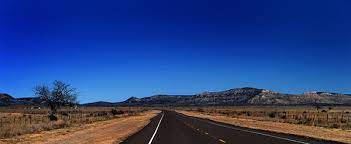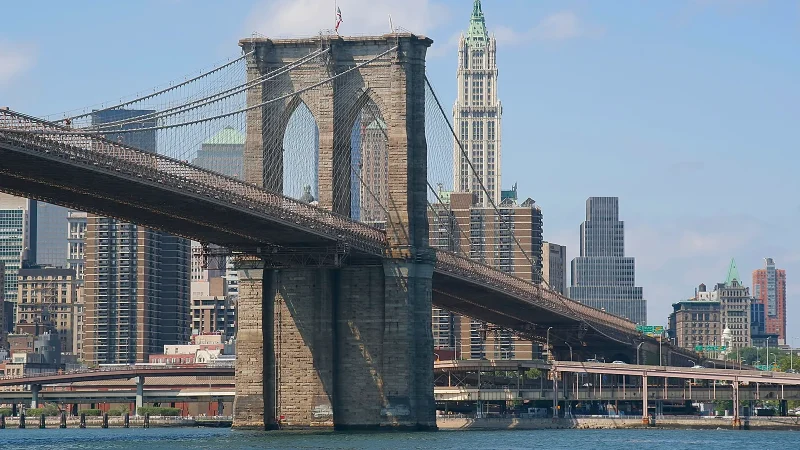Exploring the Vast Horizons: The Largest State in the USA

The United States of America is a vast and diverse country, and each state contributes a unique piece to the national mosaic. Among them, one stands out for its sheer size and grandeur – Alaska, the largest state in the USA. Encompassing awe-inspiring landscapes, rich wildlife, and a history as vast as its terrain, Alaska captivates the imagination of those who venture into its expansive wilderness.
Geography:
Alaska’s immense size is staggering, covering an area of approximately 663,300 square miles, making it the largest state in the USA by a considerable margin. To put it into perspective, Alaska is larger than the next three largest states combined – Texas, California, and Montana. Its geography is a diverse tapestry that includes glaciers, mountains, tundra, forests, and a rugged coastline that stretches for over 6,600 miles.
The towering peaks of the Alaska Range, including the iconic Denali, North America’s highest peak, dominate the state’s interior. Vast expanses of tundra, home to unique flora and fauna, sprawl across the northern regions. Meanwhile, the southeastern panhandle boasts lush rainforests, and the coastal areas are dotted with fjords and islands.
Wildlife:
Alaska’s vast and varied ecosystems provide a haven for an abundance of wildlife. The state is a wildlife enthusiast’s paradise, offering the opportunity to witness majestic creatures in their natural habitat. Grizzly bears, moose, wolves, and bald eagles are just a few of the species that call Alaska home.
The coastal waters are teeming with marine life, including humpback whales, orcas, seals, and sea lions. The state’s rivers and lakes are renowned for their salmon runs, attracting not only the fish but also bears and eagles seeking a bountiful feast. Alaska’s commitment to conservation ensures the protection of its diverse ecosystems and the preservation of its unique wildlife.
History and Indigenous Cultures:
Alaska’s history is as expansive as its landscapes. Long before the arrival of European explorers, the region was home to indigenous peoples with rich and diverse cultures. The native populations, including the Inupiaq, Yupik, Aleut, and Tlingit, have deep connections to the land, relying on its resources for sustenance and spiritual significance.
In 1867, the United States purchased Alaska from Russia in what became known as the Alaska Purchase. Initially met with skepticism, the acquisition proved to be a strategic and economic boon for the U.S. As the gold rush gripped the state in the late 19th century, Alaska became a hub for prospectors seeking their fortunes in the untamed wilderness.
Economy:
Alaska’s economy is shaped by its unique geography and abundant natural resources. The state is a powerhouse in the production of oil and gas, with the Prudhoe Bay oil fields on the North Slope ranking among the largest in North America. The revenue generated from these resources has played a crucial role in funding state programs and services.
Fishing is another economic cornerstone for Alaska, with its waters providing a significant portion of the nation’s seafood. Commercial and sport fishing are vital industries, supporting local economies and providing employment opportunities for many Alaskans.
Tourism:
Alaska’s breathtaking scenery and diverse wildlife make it a magnet for tourists seeking an immersive and unforgettable experience. The state’s national parks, including Denali National Park and Preserve, Glacier Bay National Park, and Wrangell-St. Elias National Park, attract visitors from around the world. Whether it’s hiking through pristine wilderness, witnessing the Northern Lights, or embarking on a wildlife cruise, Alaska offers a myriad of opportunities for adventure and exploration.
Challenges and Resilience:
Despite its vast resources and natural beauty, Alaska faces unique challenges. The extreme climate, isolation of many communities, and the delicate balance of its ecosystems require careful management and sustainable practices. Climate change poses a significant threat, impacting everything from the state’s wildlife to the stability of its permafrost.
Alaska’s residents, known as Alaskans, display remarkable resilience in the face of these challenges. The state’s tight-knit communities often rely on self-sufficiency, with many embracing a lifestyle that embraces the principles of sustainability and environmental conservation.
Conclusion:
Alaska, the largest state in the USA, is a land of unparalleled beauty, rich history, and diverse ecosystems. From the towering peaks of the Alaska Range to the expansive tundra and the rugged coastline, the state’s geography is as varied as its wildlife. Alaska’s economic significance, driven by its vast natural resources, has played a crucial role in shaping its present while its commitment to conservation ensures a sustainable future.
As the challenges of climate change loom, Alaska’s resilience and the determination of its people to protect their unique home stand as a testament to the spirit of the Last Frontier. Exploring the largest state in the USA is not just a journey through its landscapes; it’s an immersion into a world where nature, history, and human endeavor converge in an extraordinary tapestry.
-
What is the largest state in the USA?
- Alaska holds the title of the largest state in the United States, covering an expansive area of approximately 663,300 square miles.
-
How does Alaska’s size compare to other states?
- Alaska is larger than the next three largest states combined – Texas, California, and Montana.
-
What are the major geographical features of Alaska?
- Alaska boasts diverse landscapes, including the Alaska Range with peaks like Denali, vast tundra expanses, lush rainforests in the southeastern panhandle, and an extensive coastline with fjords and islands.
-
What wildlife can be found in Alaska?
- Alaska is home to a diverse range of wildlife, including grizzly bears, moose, wolves, bald eagles, humpback whales, orcas, seals, and various species of salmon.
-
How did Alaska become part of the United States?
- The United States purchased Alaska from Russia in 1867 in a deal known as the Alaska Purchase. Initially met with skepticism, the acquisition later proved strategically and economically beneficial.
-
What is Alaska’s economy based on?
- Alaska’s economy is driven by the oil and gas industry, with significant oil fields on the North Slope. Fishing is another crucial sector, providing a substantial portion of the nation’s seafood.
-
Which national parks can be found in Alaska?
- Alaska is home to several stunning national parks, including Denali National Park and Preserve, Glacier Bay National Park, and Wrangell-St. Elias National Park.
-
How important is tourism to Alaska’s economy?
- Tourism is a vital industry in Alaska, drawing visitors from around the world who seek to experience its pristine wilderness, diverse wildlife, and unique cultural heritage.
-
What are the challenges faced by Alaska?
- Alaska faces challenges such as extreme climates, isolation of communities, and the impacts of climate change. The delicate balance of its ecosystems requires careful management and sustainable practices.
-
How do Alaskans cope with the challenges of living in such a vast and remote state?
- Alaskans often display resilience and self-sufficiency in the face of challenges. Many communities embrace a lifestyle that incorporates sustainability and environmental conservation.
-
What role does Alaska play in the nation’s oil production?
- Alaska is a significant contributor to the nation’s oil production, with the Prudhoe Bay oil fields on the North Slope being among the largest in North America.
-
How can tourists explore Alaska’s wilderness?
- Tourists can explore Alaska’s wilderness through various means, including hiking in national parks, embarking on wildlife cruises, and witnessing the Northern Lights, creating unforgettable experiences.
These FAQs provide a brief overview of Alaska, shedding light on its size, geography, wildlife, economy, and the challenges and opportunities it presents to both residents and visitors.






